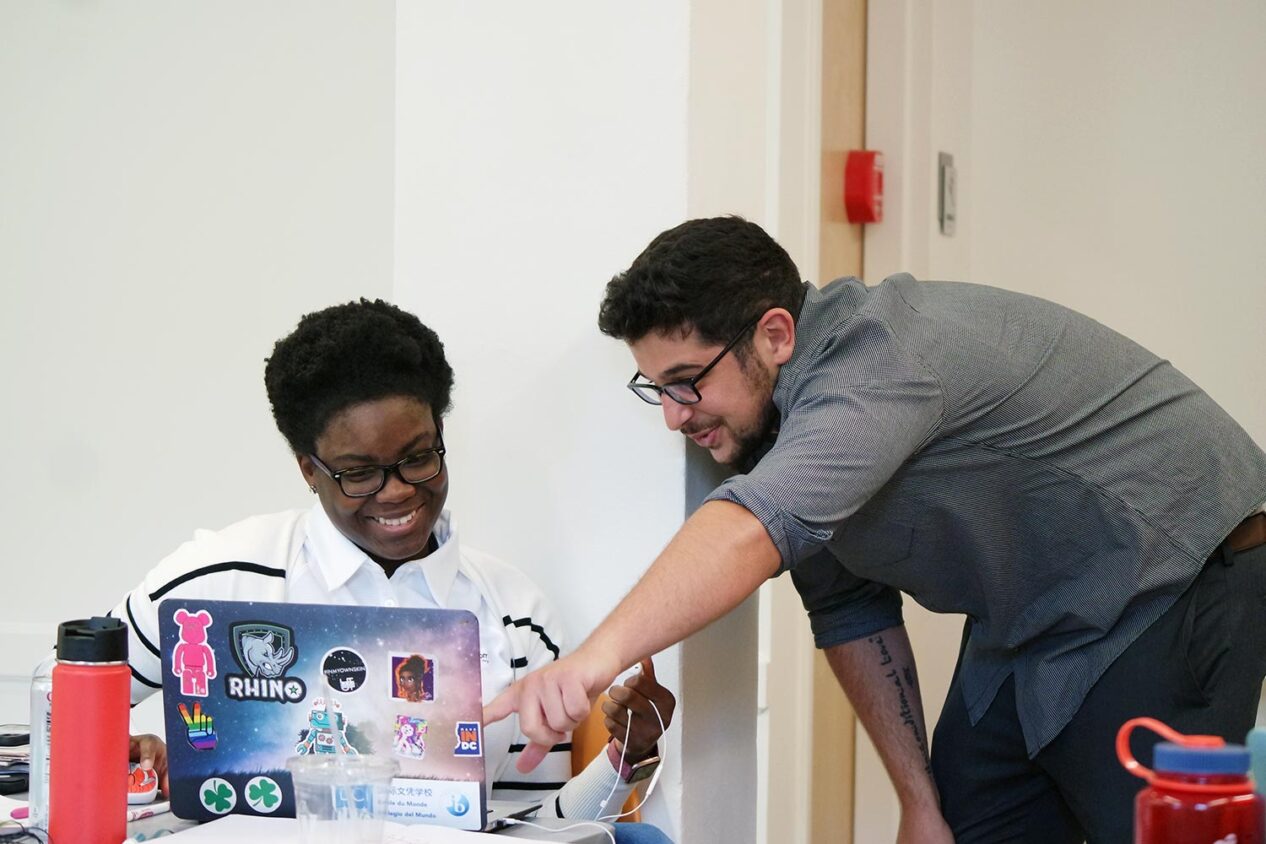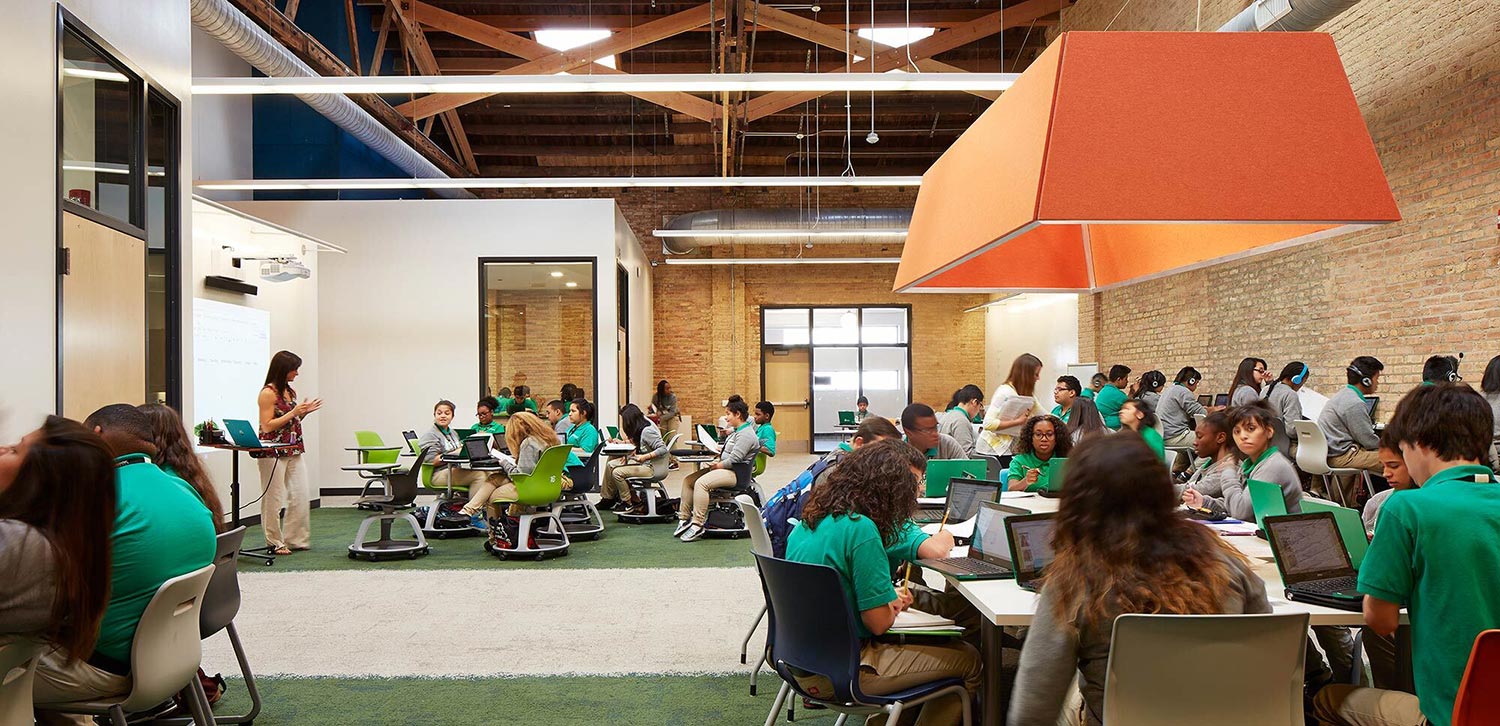The Innovative Models Exchange Deep Dive: Blended Learning

Educators often comment that “no student learns the same way.” Blended learning—the topic of one of several collections covered on the Innovative Models Exchange— takes that perspective and applies it to everyday teaching. Through the blending of various learning modalities, face-to-face instruction is coupled with the use of technology to create a robust, personalized education experience for students.
“Teaching is not delivering information. Teaching is building relationships with students and supporting them as they apply new information to complex tasks,” says Kareem Farah, co-founder and CEO of the Modern Classrooms Project. “The power of technology is that it allows educators to spend less time delivering information and more time truly teaching.”
WHAT ARE THE TRADEMARKS OF BLENDED LEARNING?
Multiple Learning Modalities
As in its name, blended learning relies on the use of various instructional formats called modalities. Modalities often include online learning, small group instruction, peer learning, independent learning, goal conferencing, or tutoring.
Intrinsic Schools’ Pods employ most of those learning modalities. Students spend some time doing self-directed work online, setting goals with a mentor, spending time in small and large group instruction, and producing larger independent and group projects.
“We [Intrinsic Schools] believe engaging in a variety of learning modes is critical for students to build the academic and agency habits and skills they need to experience postsecondary success,” says Ami C. Gandhi, Chief Learning Officer at Intrinsic Schools. “Students work on content and skills that are relevant to their identity and community and rooted in real world applications. As a result, students are more collaborative, independent, and resourceful; build stronger relationships with teachers and each other; and make faster progress toward our graduate outcomes.”

Use of technology
Technology is fundamental to blended learning. It allows students to engage with customized content to meet them where they are. It also enables powerful dashboards that provide holistic data to help teachers and students set targets and create plans for achieving academic outcomes.
“The strategic use of technology allows for a multitude of student-teacher and student-student configurations. The most effective blending learning programs we use provide real-time data, meet students where they are and accelerate their growth, and deliver explicit, transparent learning targets,” Gandhi says. “When coupled with strong pedagogy and personalized support from a teacher, learning becomes demystified for students. They understand what skills they’ve mastered, can navigate a range of resources and become more self-directed, and can articulate how they learn best.”
The Modern Classrooms Project uses technology to ensure students can access learning anytime. Its learning management tool allows for data on student performance while allowing teachers to spend more time instructing small groups of students or one-on-one.
Self-directed learning and agency
Self-direction is also an integral aspect of blended learning. Tech-enriched learning allows students more flexibility and ownership over when and where they learn, empowering students to have control over their learning. Because students have agency over their learning, they’re better equipped to understand how they best take in information.
“A high-quality education must teach students how to be self-regulated learners. Without it, students become highly reliant on overly structured learning environments to grow academically,” Farah says. “That ultimately leads to them being blind-sided when those structures disappear.”
Students are empowered to drive their own learning and engage in an iterative cycle to set goals, make plans, demonstrate learning, and reflect—all key components of Gradient Learning’s Summit Learning design and the 16 Habits of Success. This leads to a self-driven education that is supported by mentorship, traditional instruction, and self-paced online learning.
Autonomy enables mastery-based learning, one of the core aspects of The Modern Classrooms Project. Students progress through lessons based on their proficiency with each lesson’s content knowledge or skill. Because the lessons are online, students can rewatch lessons, retake quizzes, and continue with that part of the curriculum until they have fully mastered it. Through it all, students get to dictate what they do and how they want to learn.
WHAT ASPECTS VARY?
- Approaches leveraged: While there are many approaches to blended learning, common ones include station rotation, individual rotation, and flex.
- Modalities employed: Blended learning relies on different instruction types, but schools can choose to implement whichever ones it sees fit.
- Level of self-direction: With the online tools, the lessons can be curated by the teacher, or teachers can collaborate with the students on what their lessons look like.
- Time spent using technology: For each class session, students can spend 30 minutes or more learning on technology.
BLENDED LEARNING MODELS
Transcend supports communities to create and spread extraordinary, equitable learning environments.

